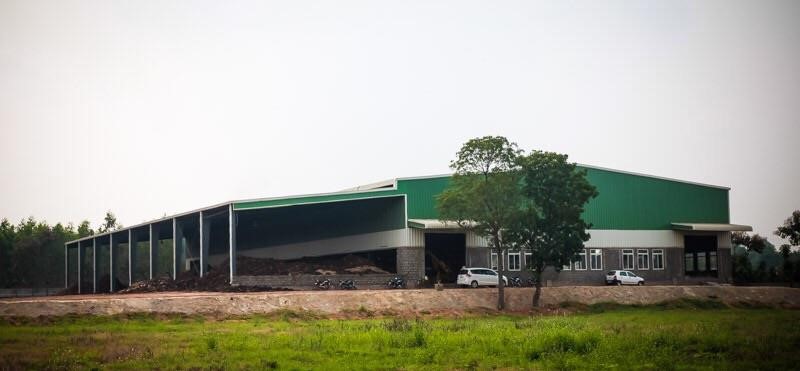Introduction to South India’s Largest Biomass Pelleting Plant
During one of EAI’s Biomass Supply Chain Optimization project for a global FMCG for their three plants in Andhra Pradesh, Punjab & Haryana, we established a good relationship with some of the large names in the biomass briquetting and pelleting industry. Surprisingly the number of large vendors, in terms of the production capacity and the clients associated, are a very few in the southern parts of India.
One such biomass briquette and pellet manufacturer is from the district of Eluru in Andhra Pradesh. Rohan Gutta, the Executive Director of the plant, who has immense knowledge in the field of utilization of agricultural waste into valuable products, established this plant in the year 2012 and it currently produces 3600 tons of briquettes and 840 tonnes of pellets annually. He has invested USD 1.9 million in infrastructure, working capital and R&D which includes –
- 35,000 Sq Ft PEB Facility, Admin office, Security Office, Weigh Bridge room and Generators shed
- Setup in 8.31 Acres
- 100 employees
- Very well done greenbelt and internal roads
- 5 acres available for expansion
- 60 tonnes capacity weigh bridge
- Total area is covered with pipelines for any fire hazard with a 1 lac liters water sump
- Dedicated 11kv power line from substation
- 250KVA and 400KVA generators for 100% Power back up.
- Loading and unloading machines for raw-materials
EAI has visited more than hundreds of biomass briquetting/pelleting facilities PAN India and there is no doubt that only a handful of briquetting/pelleting facilities are present like this one.
Net Zero by Narsi
Insights and interactions on climate action by Narasimhan Santhanam, Director - EAI
View full playlistCurrent operations of the plant
Rohan’s biomass plant is currently involved in the production of –
- Biomass Briquette (100mm) for industrial boilers
- Biomass Pellets (6 – 8mm) for industrial boilers and for commercial segments an alternate fuel in hotels, restaurants
- Biomass Cubes (32mm) used as cattle feed
- Biomass burner (6kg, 9kg, 15kg and 20kg) used to burn the pellets in the commercial segments
His current customers include large corporates – GSK, Jersey, SH Group, Vimala Feeds, Piyanshu Chemicals, Hetero, Godrej and more. He also has 60 customers in the commercial segment utilizing their pellet burners consuming pellets manufactured by them.
The need for investments – Balancing of Equipment
Rohan estimates a huge potential for pellets in five nearby districts of Andhra Pradesh from possible customers like Coca-Cola, Pepsi, Haldirams, Britannia and more who are located in close proximities to the plant.
So based on the huge market potential and almost zero competition, Rohan is looking for investments to expand is business by balancing the equipment by adding up to a 5 tonnes/hour pellet line to the current production to meet the demand. This will be done in the existing infrastructure with no additional land required.
So Rohan’s Business Case is as follows –
Rohan’s biomass pellet plant will be one of the top 5 largest producers of wood pellets in India and the no.1 in south India with an addition of a 5 tonnes/hour pellet line to the existing infrastructure, and will be supplying to a select group of companies for large scale use in boilers, and will be an integrated supplier of appliances and pellets for smaller scale establishments.
Looking for VC investment
Rohan’s biomass pelleting plant is looking for VC investments to support his expansion plans. The additional capital will be invested in balancing of equipment by adding up a 5 tonnes/hour pellet line to the current production to meet the demand in local market.
Rohan is keen to meet investors in this regard and explain his business and his business case.
If you’re interested in interacting with Rohan regarding this attractive investment opportunity, please send an email to –consult@eai.in
EAI looks forward to hearing from interested investors.
Thanks.
Check out: EAI Consulting for Bio-energy & Biofuels, Bioplastics & Other Biomass-based Value Added Products





 Our specialty focus areas include
Our specialty focus areas include



